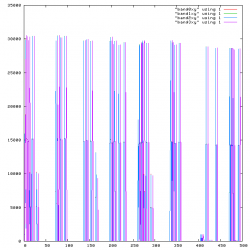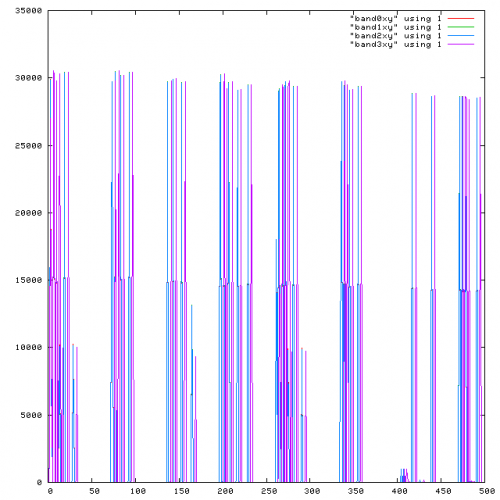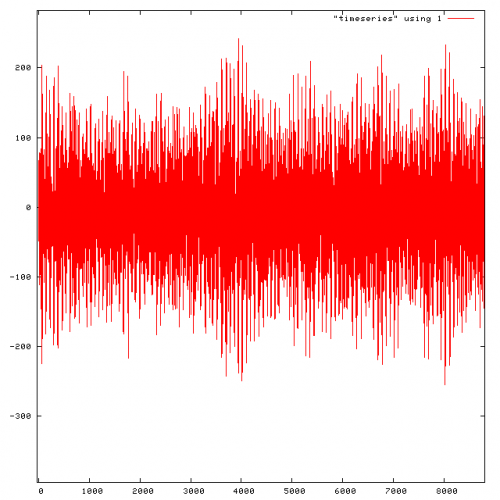User Software :: CR-Tools :: Inversion of Polyphase filter
Basic description of the Test
- To test inversion software of polyphase filters.
- Andre Gunst, Lars Bähren, Kalpana Singh
- Raw time-series (TBB) data with beamformed (polyphase filtered) data is required. Aim is to test the inversion of polyphase filter so better to avoid modifications in data for example beamforming, or if it is not possible then to use coefficients unity for beamforming.1)
Software
Summary of test results
I have read TBB data using DAL::TBBTimeseries and beamformed (filtered) data, using DAL::BeamFormed, and filtered data looks bit strange to me as filtered data contains a block of zeros. This block of zeros or non-zero blocks do not have constant width.
Amplitude of 4 consecutive subbands are plotted, and amplitudes for 3 subbands are exactly same which is confusing and fourth one is also similar in magnitude but shifted by one sample.3) This kind of output is not expected from any filter if input to the filter is simply white noise.
However, with this kind of noise input to filter I was expecting output similar to what I got as an output from my simulated polyphase filter. Amplitude of 4 consecutive subbands (same as for above plot of filtered data) are plotted here and it is continuous and amplitudes for different subbands do not overlap, they are different.
I was expecting this kind of response from beamformed data which I got from last test run. so my opinion is something went wrong, that's why I am requesting for another test run.
Testing
| From | Kalpana Singh |
|---|---|
| Date | October 24, 2008 |
I am wondering if somebody can make my doubts clear, I am working for inversion of frequency domain data (filtered data using polyphase filters) i.e., beamformed data.
Input to polyphase filter is simply gaussian noise (see plot raw_timeseries.png), and intensity of four consecutive subbands are ploted in subbands.png, this is the response of polyphase filter bank. This filtered data I have got from test run for the inversion check of polyphase filter bank. I don't understand these group of peaks, if input to any filter is gaussian noise, ouput cannot be peaks like this.
I implemented my simulated filter on gaussian noise, output is shown in simulated.png for 4 consecutive subbands, I expected same response from filtered data.
Although, this data which i got as response of polyphase filters is beamformed data, but even then I don't expect such peaks as a result of beamforming.
I hope people who have already played with beamformed data of LOFAR can help me, may I get data of any subband for any observation from Jason or Ramesh, that would be useful to have an idea.
 |  |  |
| Input to polyphase filter is simply gaussian noise | Output from simulated PPF, using gaussian noise signal as input |
|---|


